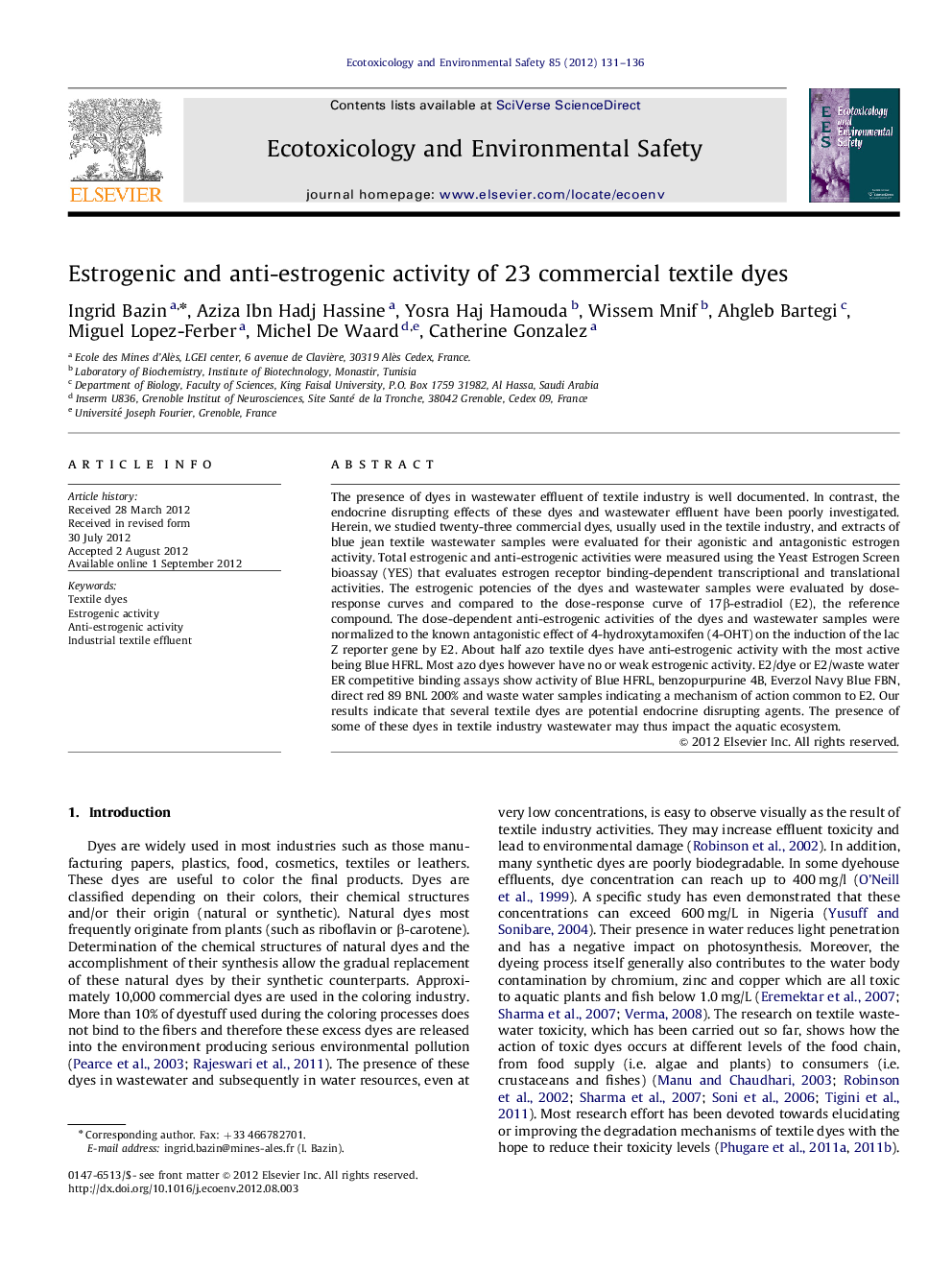| کد مقاله | کد نشریه | سال انتشار | مقاله انگلیسی | نسخه تمام متن |
|---|---|---|---|---|
| 4420815 | 1618978 | 2012 | 6 صفحه PDF | دانلود رایگان |

The presence of dyes in wastewater effluent of textile industry is well documented. In contrast, the endocrine disrupting effects of these dyes and wastewater effluent have been poorly investigated. Herein, we studied twenty-three commercial dyes, usually used in the textile industry, and extracts of blue jean textile wastewater samples were evaluated for their agonistic and antagonistic estrogen activity. Total estrogenic and anti-estrogenic activities were measured using the Yeast Estrogen Screen bioassay (YES) that evaluates estrogen receptor binding-dependent transcriptional and translational activities. The estrogenic potencies of the dyes and wastewater samples were evaluated by dose-response curves and compared to the dose-response curve of 17β-estradiol (E2), the reference compound. The dose-dependent anti-estrogenic activities of the dyes and wastewater samples were normalized to the known antagonistic effect of 4-hydroxytamoxifen (4-OHT) on the induction of the lac Z reporter gene by E2. About half azo textile dyes have anti-estrogenic activity with the most active being Blue HFRL. Most azo dyes however have no or weak estrogenic activity. E2/dye or E2/waste water ER competitive binding assays show activity of Blue HFRL, benzopurpurine 4B, Everzol Navy Blue FBN, direct red 89 BNL 200% and waste water samples indicating a mechanism of action common to E2. Our results indicate that several textile dyes are potential endocrine disrupting agents. The presence of some of these dyes in textile industry wastewater may thus impact the aquatic ecosystem.
► We examined the endocrine disruptor effects of 23 commercial textile dyes and of a textile effluent.
► Most dyes used in Tunisian dyeing companies have a clear anti-estrogenic activity.
► A Tunisian textile effluent of blue jean industry possesses anti-estrogenic activity.
► Some dyes can contribute to the endocrine toxicity of textile effluents.
Journal: Ecotoxicology and Environmental Safety - Volume 85, 1 November 2012, Pages 131–136